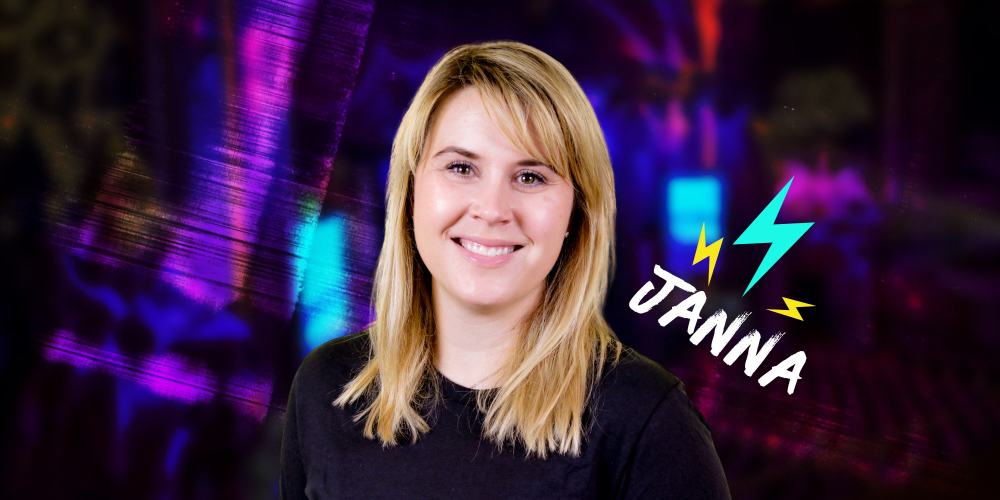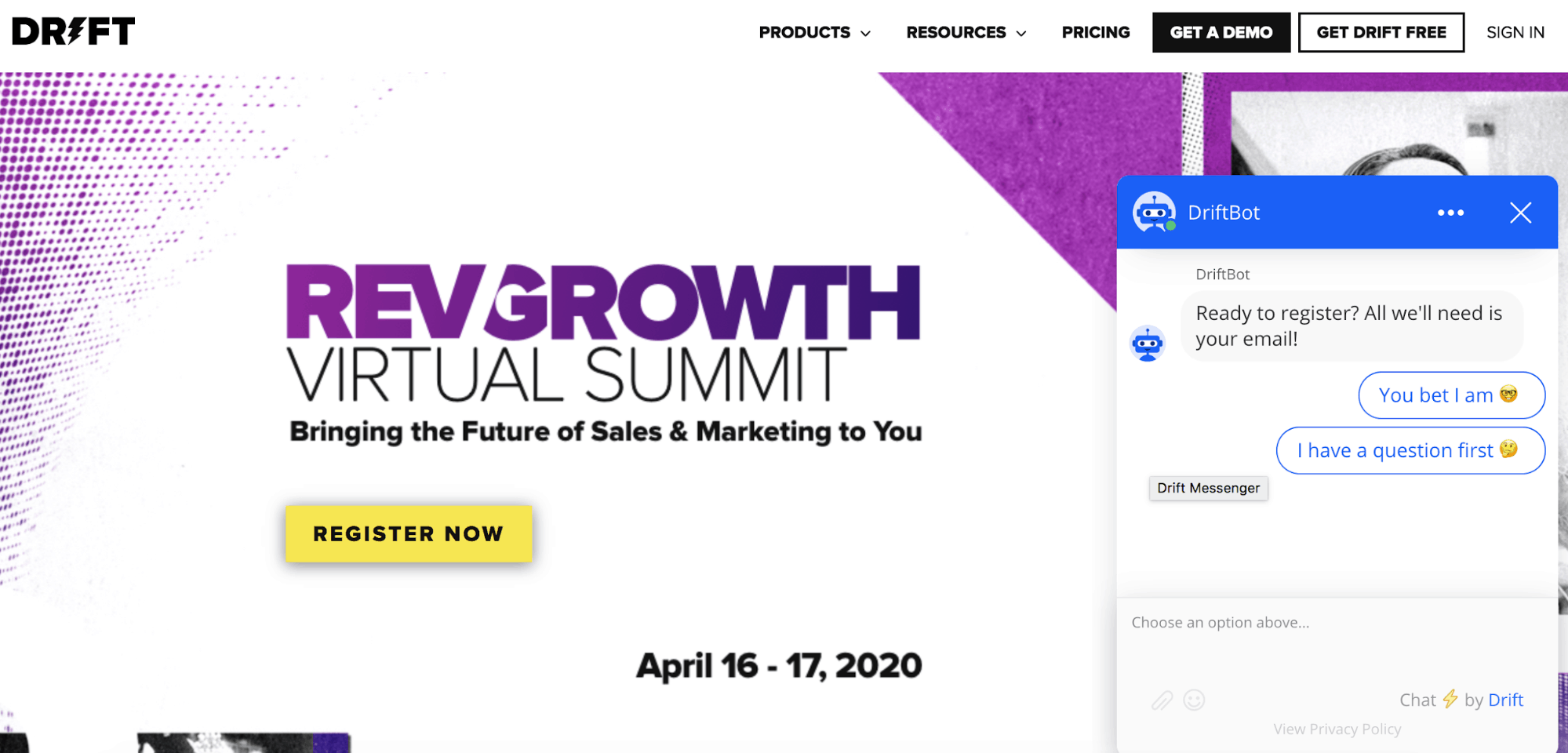
The world looks different than it did a few months ago, a few weeks ago and even a few days ago. Things are changing rapidly. As a career event marketer, I’m used to change. Shifting schedules, new speakers, last-minute sponsor additions. Change is something we event marketers can count on. We’re a tough bunch and are used to pivoting quickly. But in this new world, where in-person events have been put on hold for the time being, I’ve had to pivot in an entirely new way.
So what am I and the team at Drift doing to adapt? Read on for how we’re pivoting (and why I’m excited about it):
1. Focusing on virtual events
Most obviously, in-person events have been canceled across the board. This not only creates a huge gap in pipeline for demand gen who was relying on event leads to meet their goals. It’s enough to cause an existential crisis for this event marketer.
But, instead of panicking, we quickly pivoted to find a new way forward. And like much of the world, we went online.
Drift is teaming up with nearly 20 companies in the SaaS space to deliver high-quality content for sales and marketers. But RevGrowth Virtual Summit isn’t your typical webinar or virtual event. We’re kicking off each day of the two-day summit with big-name keynotes just like you would see at an in-person conference. We’ve also got interactive workouts, a DJ and networking built into the agenda. We’re doing everything we can to bring the in-person event experience online.
(Psst we’ll be writing more about how we pulled this off after the event, so be sure to come back to the blog for more).
If you’re toying with the idea of hosting a virtual event, first consider your customer and what they need right now. Ask what you can do to help them. And then go and build it.
2. Doubling down on partnerships
We need each other now more than ever. That goes for business relationships too. So for our virtual summit, we’re teaming up with companies across the country and relying on a network of customers, partners and peers to amplify our efforts.
Not only do partnerships offer opportunities to learn and exchange ideas, they allow us to exponentially broaden our own efforts and give each partner the ability to grow their own lead gen efforts through lead and audience sharing.
Virtual events are obviously a great place to start for lead shares, but figure out how else you might be able to partner – like eBooks, blog swaps, and traditional webinars.
While lead sharing is helpful for list building, it can get tricky. My colleague and Drift’s VP of Demand Gen, Kate Adams, shares some guidelines in her blog post here.
3. Reallocating sponsorship dollars to digital
Kate’s blog post also dives deep into how marketers can invest in digital right now to create reliable wins. For Kate, those channels and tactics include:
- Digital advertising
- Email marketing
- Tools and templates
- SEO and organic content
- Content syndication
But I’m an event marketer. So while the rest of the marketing team is helping close the lead gap with digital, I’m also leaning on the event marketing community ?
4. Relying on community now more than ever
For the past few months, I’ve been part of an event marketer community on Slack. We would chat from time to time and I found it relatively helpful, but it wasn’t too active.
Now I’m in there daily, multiple times a day, to sync up with other event marketers and hear how they’re adapting. There’s not a sense of competition, but instead, we’re all working together to help each other find solutions.
And I’ve seen this kind of collaboration play out in other areas of my life too. The marketing team at Drift is more aligned and fired up than ever before. The Drift Community is full of tips, recommendations and, of course, fun gifs and memes. In my personal life, friends I haven’t connected with in years are reaching out on Zoom and FaceTime. We’re all realizing that we’re in this together. And the more we can do right now to help each other – whether in business or at home – the better off we’ll all be when this ends.
5. Rethinking our event strategy for when this is all over
At some point, this will end. We’re just not sure when. So we’re looking at our event strategy on a monthly and quarterly basis to figure out what can and should be moved online. We’re already planning a few more virtual events for later this spring. And I’m actively working with brand marketing, demand gen and sales and customer success to make sure we’re driving valuable content for prospects and customers and sourcing leads.
More broadly, I’m trying to understand how our new work from home reality might impact attendance at future in-person events when things return to some semblance of normal. Will people be reluctant to get together in large groups? Or will they be yearning for more in-person connection?
Like most of you, I’m waiting to find out. But I’m hopeful. Because in the short term we’ve found a solution. And in the long-term, I know my team and the event marketing community have my back.







